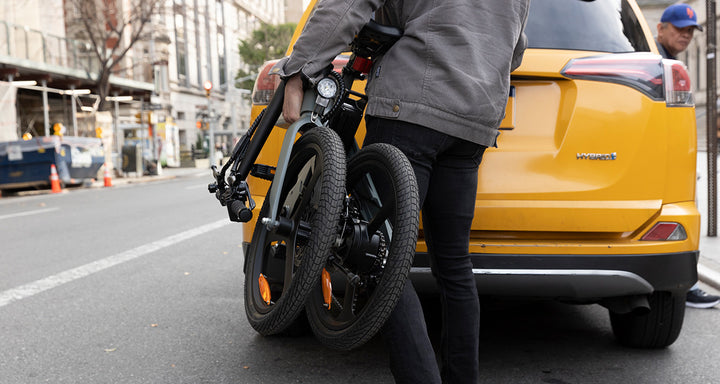The electric folding bike market in the UK has seen a remarkable surge in popularity over recent years. This growth can be attributed to a combination of technological advancements, urban commuting needs, and a growing emphasis on sustainable transportation. In this article, we will delve into the latest trends in electric folding bikes in the UK, offering insights into what makes these bikes a compelling choice for modern commuters.

Technological Innovations
One of the most significant trends in the electric folding bike sector is the rapid pace of technological innovation. Modern electric folding bikes are equipped with advanced features such as lightweight lithium-ion batteries, powerful motors, and smart connectivity options. These innovations have made electric folding bikes more efficient, reliable, and user-friendly.
For instance, the integration of smart sensors and mobile apps allows riders to monitor battery life, track their routes, and even receive maintenance alerts. Additionally, advancements in battery technology have led to longer ranges and shorter charging times, making electric folding bikes a practical option for daily commuting.
Urban Mobility Solutions
As cities become more congested, the need for efficient and flexible transportation solutions has never been greater. Electric folding bikes offer a unique solution to this problem by combining the benefits of electric propulsion with the convenience of a foldable design. This makes them ideal for urban commuters who need to navigate crowded streets and limited storage spaces.
Moreover, the ability to fold and carry these bikes on public transportation or store them in small apartments adds to their appeal. This trend is particularly relevant in the UK, where urban areas are densely populated, and space is at a premium.
Sustainability and Environmental Impact
Another driving force behind the popularity of electric folding bikes in the UK is the growing awareness of environmental issues. As more people seek to reduce their carbon footprint, electric folding bikes present an eco-friendly alternative to traditional modes of transportation. By opting for an electric folding bike, riders can contribute to reducing air pollution and traffic congestion.
Furthermore, many cities in the UK are implementing initiatives to promote cycling as a sustainable mode of transport. This includes the development of dedicated cycling lanes, bike-sharing programs, and incentives for electric bike purchases. These efforts are encouraging more people to consider electric folding bikes as a viable and environmentally responsible commuting option.
Affordability and Accessibility
While electric folding bikes were once considered a luxury item, they have become more affordable and accessible in recent years. The increased competition in the market has led to a wider range of options at various price points, making it easier for consumers to find a bike that fits their budget and needs.
Additionally, government incentives and subsidies for electric bike purchases have further lowered the financial barrier for potential buyers. This trend is expected to continue as the demand for electric folding bikes grows, leading to more innovations and cost-effective solutions in the market.
Conclusion
In conclusion, the electric folding bike market in the UK is experiencing a dynamic evolution driven by technological advancements, urban mobility needs, sustainability concerns, and increasing affordability. As we continue exploring the latest trends in electric folding bikes in the UK, it is clear that these versatile and eco-friendly vehicles are set to play a significant role in the future of urban transportation. Whether you are a daily commuter or an occasional rider, electric folding bikes offer a practical and enjoyable way to navigate the urban landscape.
Stay tuned for more updates and insights as we continue to explore the exciting world of electric folding bikes in the UK.





